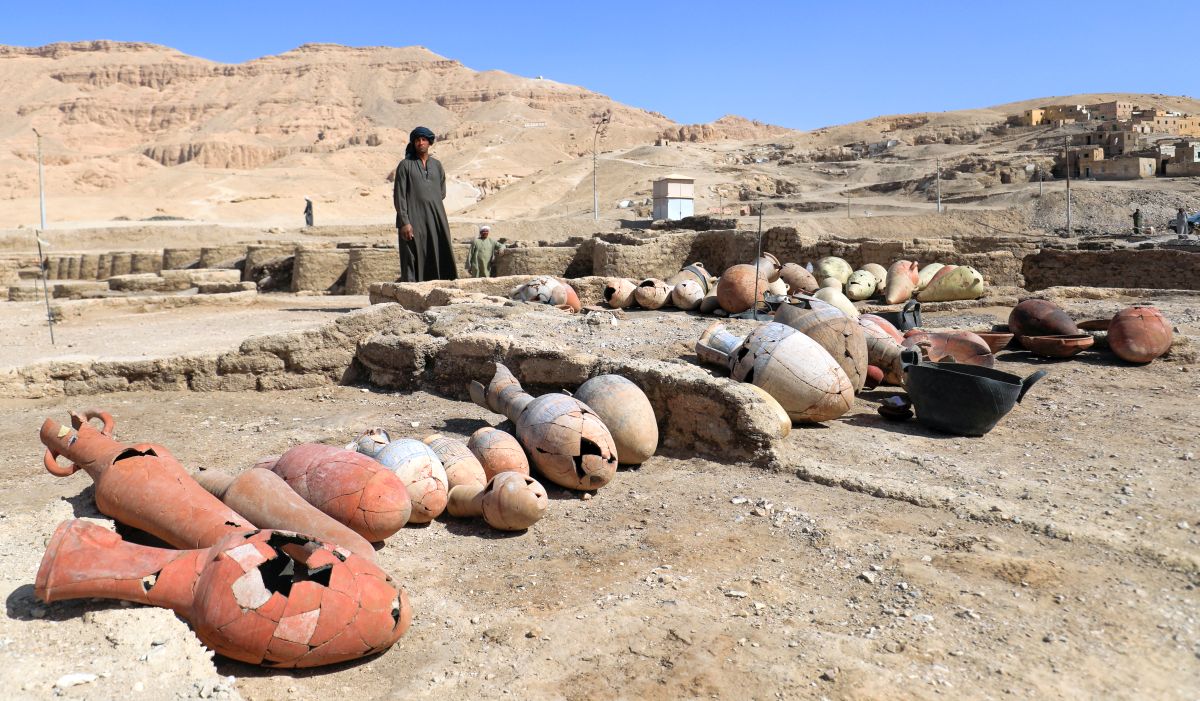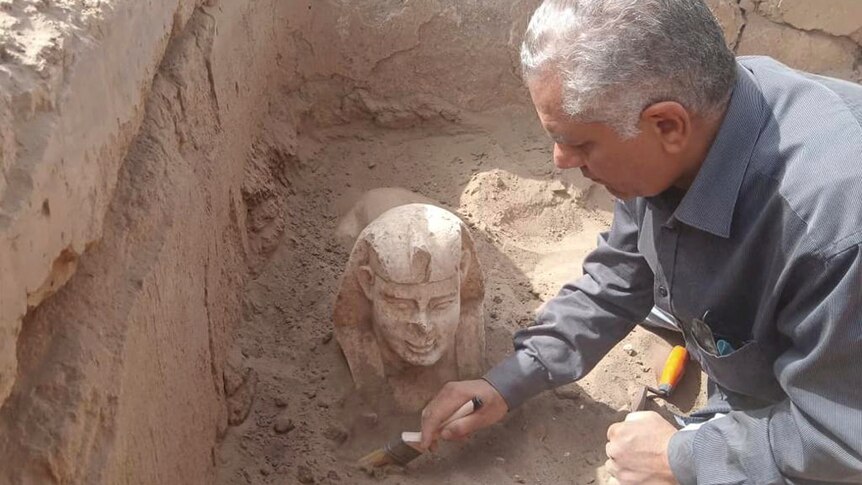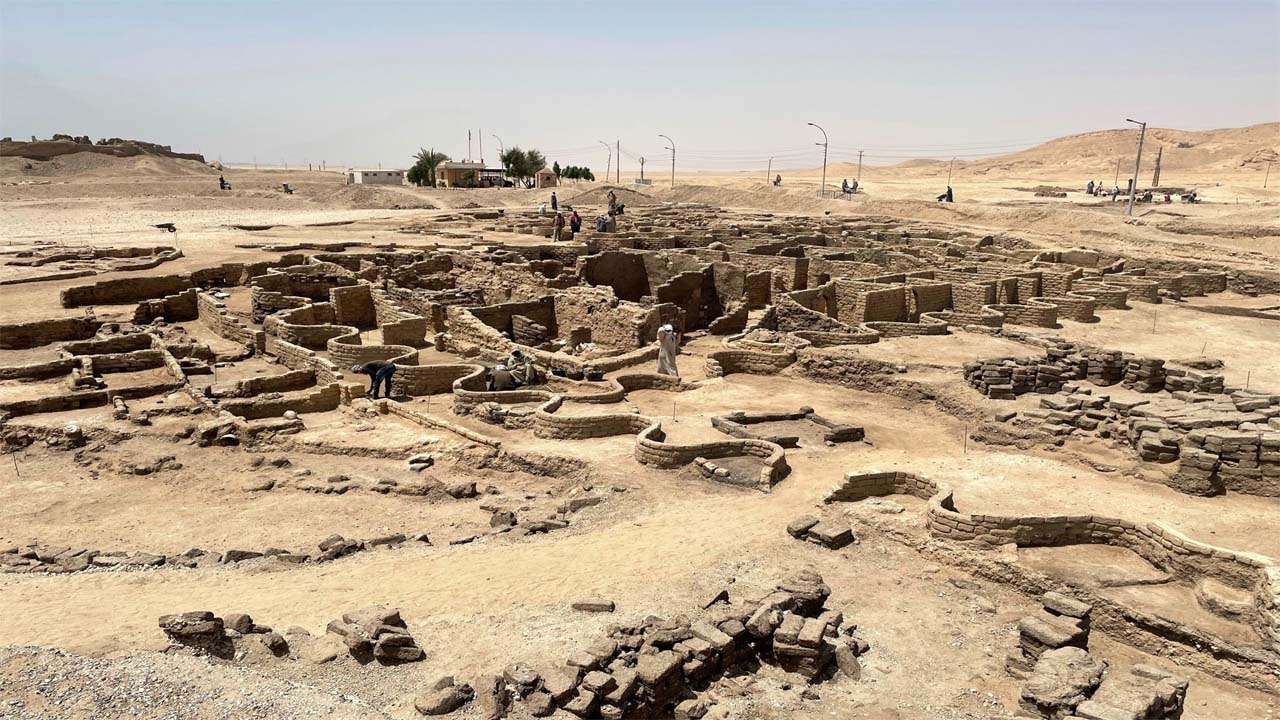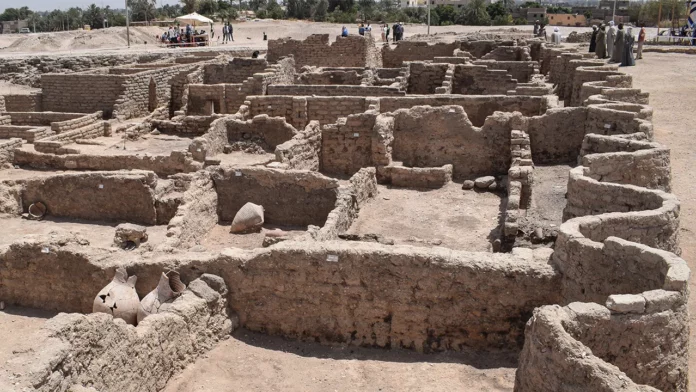A groundbreaking archaeological discovery has recently come to light in Egypt, captivating experts and enthusiasts alike. Buried under layers of sand for over 3,000 years, the largest ancient city in Egypt, known as the “lost golden city” or Aten, has been unearthed near Luxor. This remarkable find offers a rare opportunity to gain insights into the lives of the Ancient Egyptians during the height of their wealth and power.
Exploring the Lost City of Aten

Aten was discovered in the Valley of the Kings, a historically significant area used as a burial site for Egyptian pharaohs between 1539 and 1075 BCE. Despite previous attempts by government missions, the city had eluded discovery until now. Led by renowned Egyptologist Zahi Hawass, a team of archaeologists, in collaboration with Egypt’s Ministry of Tourism and Antiquities, has uncovered a treasure trove of ancient artifacts and glimpses into the past.
The findings include faded rings, jewelry, colored pottery vessels, beetle amulets, and mud bricks that provide valuable clues about the daily life and material culture of the ancient inhabitants of Aten. This archaeological site has been hailed as the second-most important discovery since the renowned tomb of Tutankhamun, shedding new light on a significant yet enigmatic period in Egyptian history.

The Reign of Pharaoh Amenhotep III and the Mystery of Aten
Aten’s origins trace back to the reign of Pharaoh Amenhotep III, who ruled from 1386 to 1353 B.C. During this time, the pharaoh’s wealth, power, and opulence reached extraordinary heights. Towards the end of his reign, Amenhotep III shared power briefly with his son, Pharaoh Amenhotep IV, who later became known as Akhenaten. It was during this period that the city of Aten, previously identified as Akhenaten, was established as a new capital and witnessed a religious and cultural revolution.

However, the legacy of Akhenaten, his capital city, and his religious reforms were systematically erased from history after his son, King Tutankhamun, ascended the throne. This deliberate erasure has intrigued archaeologists and historians for centuries, fueling speculation about the events and motivations behind the transformation and subsequent suppression of Akhenaten’s reign.

The Significance of Aten’s Discovery
The excavation of Aten provides an invaluable opportunity to delve deeper into the mysteries surrounding Akhenaten’s rule and gain a better understanding of everyday life during the reign of Amenhotep III. As experts analyze the artifacts and study the remains of the lost city, they hope to unravel the secrets of this influential period in Egyptian history and shed light on the enigmatic figure of Akhenaten.

Salima Ikram, an archaeologist leading the Egyptology unit at the American University in Cairo, describes the discovery of Aten as a phenomenal find, comparable to an Egyptian version of Pompeii—a snapshot frozen in time. The excavation offers a unique window into the past, allowing us to glimpse the ancient world and unravel the mysteries of one of history’s greatest enigmas.
The unearthing of the “lost golden city” of Aten in Egypt marks a significant milestone in our understanding of ancient civilizations. This extraordinary discovery provides an exceptional opportunity to explore the lives and culture of the Ancient Egyptians during a period of immense wealth and religious transformation. As the excavation continues and experts delve deeper into the secrets of Aten, we can expect to gain valuable insights into the reign of Pharaoh Amenhotep III and the enigmatic figure of Akhenaten. The discovery of Aten stands as a testament to the enduring allure of archaeology and its power to unveil the hidden stories of our past.
